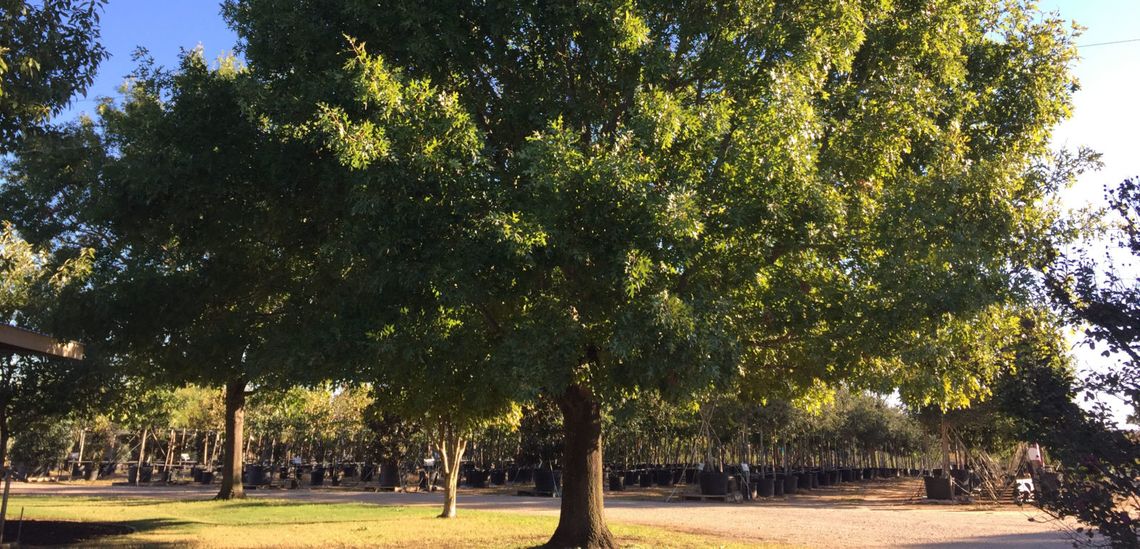IN CENTRAL TEXAS | Julie Rydell
Fall in Central Texas feels more like a second spring, but with a decrease in daylight. With the drop in overnight temperatures, it’s finally cool enough to be able to plant again. Fall is the best time for planting trees, shrubs and perennials since there is just enough time for plants to establish a strong root system before going dormant over the winter.
Native and nativeadaptive plants will always do better than non-native varieties. They are more drought tolerant and have fewer issues with pests and diseases.
Fall is the ideal time for planting all trees except for bare root and citrus trees. Trees are great additions to your landscape.
They provide shade and beauty to your yard, and they add value to your property. Texas isn’t known for its fall foliage, but if you appreciate the seasonal color change consider adding some trees that will add colorful interest to your backyard.
If you like vibrant orange fall foliage, check out Chinese Pistache. It is a Texas native-adaptive tree, one that isn’t native to an area, but it grows like it is native. Adaptive plants have most of the positive growing characteristics of natives.
They are just as drought tolerant as well as pest and disease resistant like native plants. Chinese Pistache is highly recommended by Texas A&M horticulture experts because these trees are exceptionally drought tolerant and grow very well across Texas from El Paso to Houston. They have small individual leaves that alternate on twigs that grow 10-15 inches long.
This gives them a soft, draping canopy. Chinese Pistache is a medium sized landscape tree that grows to 40’ tall. The dark green leaves turn yellow, then orange in the fall. Depending on the weather and soil conditions, the leaves can turn red and crimson.
The female trees have small berry-like fruits that the birds enjoy. If you have room for a larger tree in your yard, Shumard oaks are another great choice for vibrant fall color. Shumard oaks grow 90’ tall and 60’ wide and provide lots of shade.
The leaves are deep green with a classic oak leaf shape. Instead of turning brown like many oak trees, the Shumard oak leaves turn scarlet red in the fall.
Shumard oaks prefer a slightly more acid soil.
Our black clay soil is quite alkaline, so be sure to add some pine straw or fresh oak leaves for mulch around your newly planted Shumard oak.
Both fresh oak leaves and Pine straw are acidic and as they break down they can help neutralize the soil pH. There are soil products that you can use to help adjust the soil pH, but compost and leaf mulch are really the best soil amendments you can add to plants.
Other Texas hardy trees to plant for fall are color ornamental pear, American sweetgum, Texas red oak, and crape myrtle.
When selecting a site to plant your trees, be mindful of their mature size. Even though most trees are scrawny when we buy them, they eventually will grow, make sure you plant them far enough apart from each other and far enough from your house, neighbor’s house or power lines. The tag will have all the size and spacing information as well as light requirements.
When planting trees, shrubs and perennials, dig your hole a little more than twice the size of the root ball. Add a couple shovelfuls of compost in the hole. This will help improve our heavy, black clay soil and attract soil microbes to help your tree establish roots. Break up the roots if they seem pot bound and backfill with soil. The soft, loose soil will help the tree get established and put on new roots.
If a tree is planted in an area where there are really high winds, the tree is top heavy or if you are planting a bare root tree, then it might benefit from temporary staking just until the roots have time to get established.
Trees get stronger from being allowed to sway with the wind. They will develop strong root systems to support the trunk and branches and future growth. Be sure to check on these supports regularly as your tree grows.
Adjust and remove them after your tree is well established.
With 25 years of backyard gardening experience, Julie is a plant and nature enthusiast.
She lives in Taylor and hosts the “Plow & Hose Organic Gardening in Central Texas” podcast





